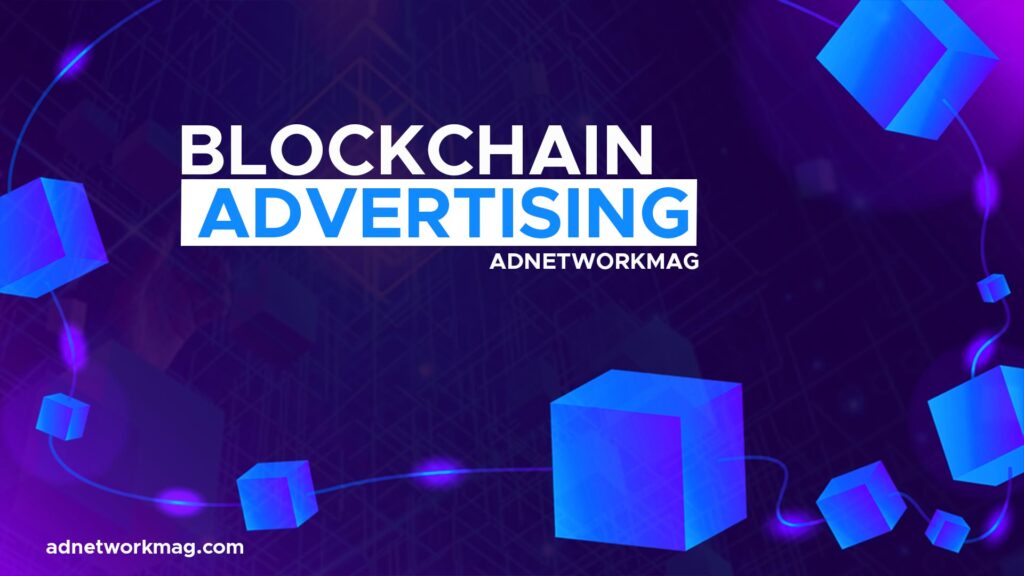Blockchain Advertising:
A blockchain is a database shared among a technology’s entire network. A blockchain acts as a database, storing data into a digital version. The most well-known use of blockchains is in cryptocurrency systems. The blockchain’s novelty ensures the safety and completeness of a data record while also generating trust without the need for an authorized third party.
New blockchain use cases in media and entertainment are constantly developing as the sector seeks to address various difficulties with novel technology solutions.
Blockchain in news and culture is growingly facilitating decentralization, optimizing digital content, and generating a more systematic method for all participants — from content creators to advertisers — in an environment riddled with an intermediary, an unfair share of profits, shifting purchasing habits, and multiple inefficiencies.
How Can Advertisers Gain Advantages From The Blockchain?
Advertisers may use a blockchain to keep track of ad expenditure since it keeps information and records transactions in real-time. In the end, this may be able to deliver a level of openness that existing systems cannot match.
At its foundation, blockchain is a distributed digital ledger system that encourages decentralization while ensuring security and transparency. When a digital record is posted on the blockchain, it becomes immutable, meaning that anybody with access may read but not change the transactions.
The main issue with these data is that there’s no definite way to determine what type of return you’re receiving on your marketing spend because digital advertising analytics are notoriously unreliable and held close to the vest by those who want to charge high costs for little results.
Furthermore, the usage of ad blockers and mobile ad blocking is becoming more dangerous to marketers. Some think that part of the solution to these issues lies in the adoption of blockchain-linked ad platforms, where users can directly benefit from consenting to view advertisements that they believe are relevant to them, providing advertisers with a more serious audience that is more likely to take long-term action rather than just providing fleeting page views.
This method might give significantly more analytical information, allowing marketers and advertisement sellers to engage in more equal and honest discussions while also legitimizing digital advertising’s image.
How Advertisers Can Use It?
This method might give significantly more analytical information, allowing marketers and advertisement sellers to engage in more equal and honest discussions while also legitimizing digital advertising’s image.
Tracking Digital Marketing Campaign:
Businesses that use blockchain technology can find themselves at the leading edge of technology. Today, many modern internet service providers (ISPs) and internet browsers have access to a wealth of information, ranging from browsing history to bank account information.
Digital marketers may use blockchain’s verified signatures to safeguard their clients’ data on their servers rather than on servers managed by third-party apps. ” This can aid users in maintaining their anonymity and improving their online privacy.
Giving Rewards To Users:
A smart contract, in which assets are transformed into a token on the blockchain, is one of the trademarks of blockchain technology. Both consumers and marketers may find advertisements to be problematic. Ads may be costly and difficult to regulate for marketers, and many users may find them invasive.
“In this form of browser, users may pick which advertisements they wish to see and are paid in tokens for doing so.” The Brave browser is a blockchain-based browser that bans advertisements and site trackers by default. Users may also choose which adverts they wish to see to obtain Brave Rewards.
Ability To Collect Data Easily:
The capacity of the blockchain to gather and exchange data might minimize or eliminate a variety of bad points in the ad buying process, such as advertising uploaded on false sites, inflated and fraudulent metrics, and so on.
The chain’s private keys and ability to indicate who has accessed data should provide marketers that are hesitant to share such information some peace of mind, making the negotiation table more equal than before.
Protecting Personal Data:
With much more possibly critical material in more hands, it’s clear that additional data protection is required. Decentralized apps may give a user a lock on their data, allowing them to choose who has access to their actions and for what reason. Another benefit of blockchain implementation for data-protection purposes may be a paradigm change toward voluntary paying to support sites rather than very covert, unscrupulous cookie and data gathering.
Data Monitoring:
Consumers’ capacity to own and distribute their data based on incentives might increase their earnings while also lowering the quantity of “poor data” created by traditional data gathering methods. Permissions for particular information and the willingness of users to exchange this information on a secure blockchain network for a price that fits them reflects a more mutually beneficial system than the existing system.
Decentralized Servers:
Another issue in the advertising arena is that bot-generated ad clicks may cost marketers a lot of money. Advertisers want to avoid squandering any of their funds when selecting competitive keywords due to the high cost of advertisements.
The use of blockchain-based decentralized systems to track digital advertisements’ activity can help reduce fraud. This method is certainly less expensive and more efficient, and it may lead to the emergence of decentralized independent organizations in the ad exchange market.
Final Words:
The promise for blockchain technology to change online advertising is enormous. Marketers, writers, businesses, and people may benefit from the transparency it provides additional possible use cases that will assist the business for years to come.

